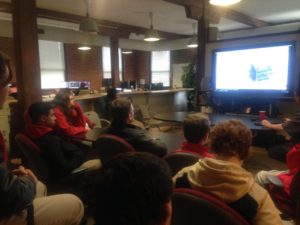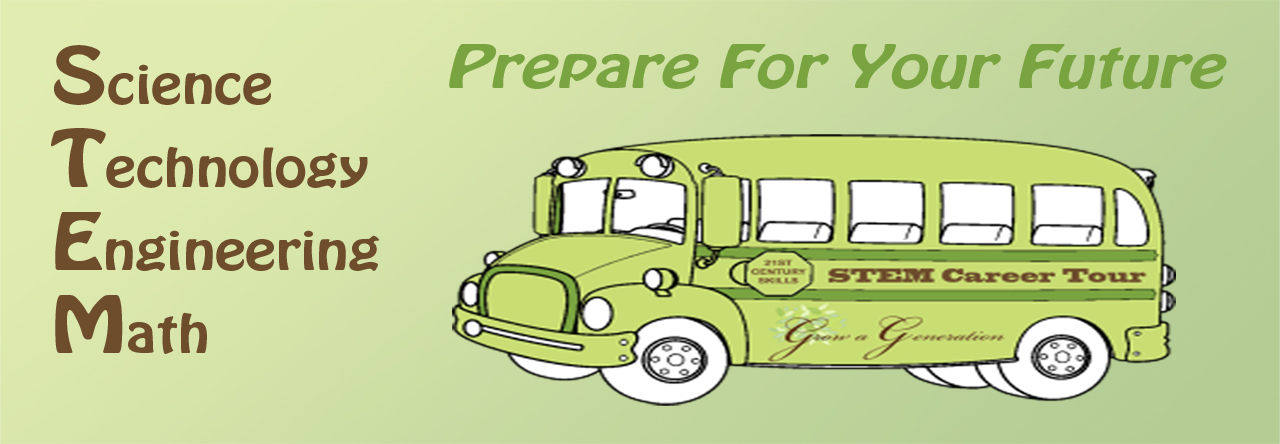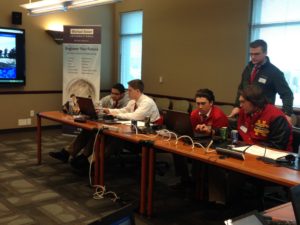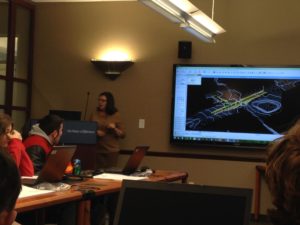 One of the most gratifying moments for a teacher is to see students engaged in purposeful wonder. I saw this in my students’ interaction with James Mauler and Travis Johnson, the president and vice president of Cadnetics respectively. Facilitated by STEM Career Tours, students enrolled in the Introduction to Computer-Aided Design and Drafting (CADD) course at Cardinal Wuerl North Catholic High School were able to see how their newly acquired skills are put to work in Greater Pittsburgh. This blog will highlight student experiences on the final stop of the STEM tour, Cadnetics.
One of the most gratifying moments for a teacher is to see students engaged in purposeful wonder. I saw this in my students’ interaction with James Mauler and Travis Johnson, the president and vice president of Cadnetics respectively. Facilitated by STEM Career Tours, students enrolled in the Introduction to Computer-Aided Design and Drafting (CADD) course at Cardinal Wuerl North Catholic High School were able to see how their newly acquired skills are put to work in Greater Pittsburgh. This blog will highlight student experiences on the final stop of the STEM tour, Cadnetics.
 The use and application of technology captured students’ attention during our visit with James and Travis. They witnessed a laser scanner render a three-dimensional model of the room they were in. The model was created and could then be manipulated using similar CADD software to what we use in the classroom. Of course, I had to deflect questions like, “why don’t we have a laser scanner at school,” and “why can’t we make models like this!” But, these questions reflect a level of interest and engagement I had not seen in the classroom.
The use and application of technology captured students’ attention during our visit with James and Travis. They witnessed a laser scanner render a three-dimensional model of the room they were in. The model was created and could then be manipulated using similar CADD software to what we use in the classroom. Of course, I had to deflect questions like, “why don’t we have a laser scanner at school,” and “why can’t we make models like this!” But, these questions reflect a level of interest and engagement I had not seen in the classroom.
The curriculum at CWNCHS emphasizes the capability of computers to increase, Precision, Efficiency, and Communication in the design process. Of these three, Communication in design was demonstrated at Cadnetics. We learned that the company provides services to multiple disciplines across many industries. The common thread was communication through visualization of a project. Whether through technical drawings or illustrative renderings, Cadnetics can put a computer two work with purpose. Students were struck by the fact that this local company is having a national and even global impact through their knowledge of CAD.
The most important lesson students gleaned during our trip was that the company covets students with short term, 1-2 year, technical degrees. Cadnetics values employees with very specified skill sets. James commented that jack-of-all-trade graduates with 4-year degrees often lack the ability to produce results efficiently. This was a refreshing perspective from an employer who is constantly looking for talent to grow his business. Students need to see that a 4-year degree is not the only path that can lead to success. Perhaps one of my CAD students will work for Cadnetics one day.

 One of the most exciting aspects of a classroom teacher’s job is to connect their curriculum to real-world applications. Facilitated by Grow a Generation’s STEM Career Tours, students enrolled in the Introduction to Computer-Aided Design and Drafting course at Cardinal Wuerl North Catholic High School were able to see how their newly acquired skills are put to work in Greater Pittsburgh. This blog will highlight student experiences on the first stop of the STEM tour, Michael Baker International.
One of the most exciting aspects of a classroom teacher’s job is to connect their curriculum to real-world applications. Facilitated by Grow a Generation’s STEM Career Tours, students enrolled in the Introduction to Computer-Aided Design and Drafting course at Cardinal Wuerl North Catholic High School were able to see how their newly acquired skills are put to work in Greater Pittsburgh. This blog will highlight student experiences on the first stop of the STEM tour, Michael Baker International.
